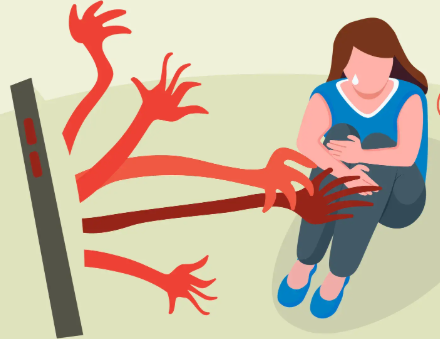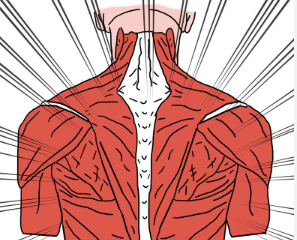Dear person with fibromyalgia,
I see you. I hear you. And above all, I believe you.
You’ve likely spent years trying to explain your pain, your fatigue, your brain fog.
You’ve visited doctors who offered nothing but blank stares, loved ones who shrugged off your suffering, and days where even standing felt like a mountain too steep to climb, You’ve been dismissed, doubted, and disbelieved. But not here. Not now.
This is a space of acknowledgment. A space to honor your truth. Because what you go through is real—even if the world can’t see it. Even if it’s invisible to scans and unreadable on test results. Even if your smile convinces others that you must be fine. I know that smile hides battles few could ever understand.
Your Pain Is Real
There is nothing imaginary about waking up in pain that stretches across your body like a storm cloud. Nothing easy about muscles that ache without relief or the kind of fatigue that no sleep can fix. Fibromyalgia is not “just being tired.” It’s not a phase or a mindset. It is a complex neurological condition that affects how your brain and body process pain.
You are not exaggerating, You are not weak. You are living every day with a condition that demands strength just to function. And that strength deserves to be seen.
You Are Not Lazy
You’ve likely been called lazy or accused of using your illness as an excuse. But here’s the truth—fibromyalgia doesn’t stop when the alarm rings. It doesn’t pause for work, errands, family needs, or social obligations, It lingers in the background of everything you do. It makes the smallest tasks feel enormous. And still, you try.
You push through, You smile when it hurts. You show up when your body begs you to rest. That’s not laziness. That’s resilience.
Your Story Matters
Every flare-up, Every night of interrupted sleep. Every moment of being misunderstood. These are chapters in a story that deserves to be told. Your experience is valid, even if others don’t understand it. You don’t need to prove your pain to anyone. You don’t need to earn compassion.
Your voice matters, even when it trembles. Especially then. Speaking your truth—no matter how softly—is an act of power in a world that often silences invisible illness.
You Are Not Alone
Fibromyalgia can feel incredibly isolating. Friends may fall away. Plans may get canceled. Some days, it seems easier to just stay quiet. But please know this—you are not alone. Others are walking this same path. Others feel the same ache, the same frustration, the same silent grief.
There are people who get it. People who won’t ask why you’re tired again, People who won’t question your pain. People who say, without hesitation, I believe you. And I’m one of them.
You Deserve Kindness—Especially From Yourself
Living with fibromyalgia means adjusting, adapting, and learning to let go of expectations you once held for yourself. That’s hard. You might grieve the life you had before. That’s okay. But remember, you still have value today—not for what you accomplish, but simply for who you are.
Be gentle with yourself. On the days you rest more than you rise, on the days when tears fall without warning, on the days when you feel like giving up—show yourself the same kindness you would give a loved one. You are doing the best you can with what you have. And that is enough.
Your Strength Is Not Measured by Productivity
In a world obsessed with doing more, chronic illness can make you feel like you’re constantly falling short. But strength isn’t found in how much you do. It’s found in how bravely you carry your pain. It’s in the courage to say “no,” to rest when you need to, to set boundaries that protect your health.
Choosing yourself is not weakness. It’s wisdom. And it’s one of the most powerful things you can do.
Frequently Asked Questions
1. Why do people with fibromyalgia often feel misunderstood?
Because it’s an invisible illness. Pain, fatigue, and other symptoms aren’t outwardly visible, making it harder for others to comprehend or validate what they can’t see.
2. What’s the best way to support someone with fibromyalgia?
Believe them. Offer consistent emotional support. Help with tasks when possible. Most importantly, listen without trying to fix them.
3. Is it normal to grieve your old life after a fibromyalgia diagnosis?
Yes. It’s completely normal to mourn the loss of your former energy, abilities, and identity. Grief is part of acceptance.
4. How do I respond when someone doubts my pain?
Protect your peace. You don’t owe proof to anyone. Share your experience with those who are open, and step back from those who constantly invalidate you.
5. Can people live full lives with fibromyalgia?
Yes. It may look different, but people can find purpose, joy, and connection despite chronic illness—especially with the right support and self-compassion.
6. Why is saying ‘I believe you’ so powerful?
Because validation breaks the cycle of isolation and self-doubt. It creates a safe space for honesty and healing, and reminds the person they are not alone.
Dear person with fibromyalgia, I believe you.
I believe in your strength, even on the days you feel weak, I believe in your truth, even when others can’t see it. I believe in your right to rest, to speak, to take up space, and to be treated with dignity. Your illness may be invisible, but you are not. Your pain is real, but so is your power. And in case no one has told you today—you are enough, exactly as you are.
For More Information Related to Fibromyalgia Visit below sites:
References:
Fibromyalgia Contact Us Directly
Click here to Contact us Directly on Inbox
Official Fibromyalgia Blogs
Click here to Get the latest Chronic illness Updates
Fibromyalgia Stores



